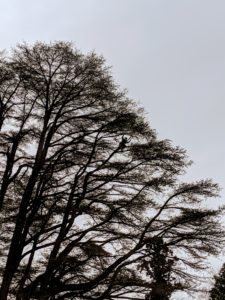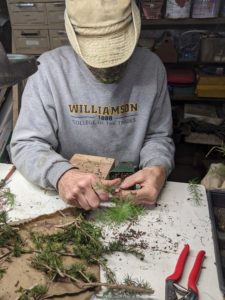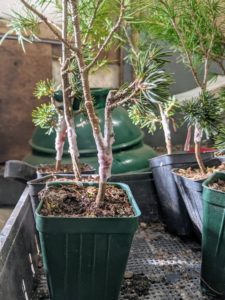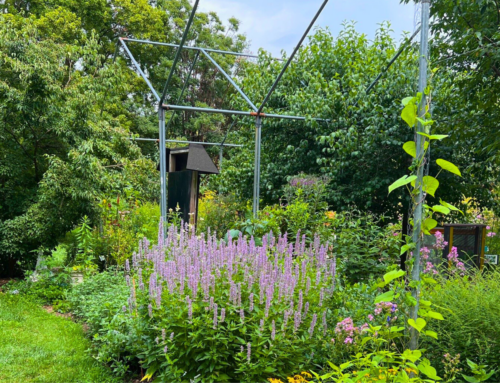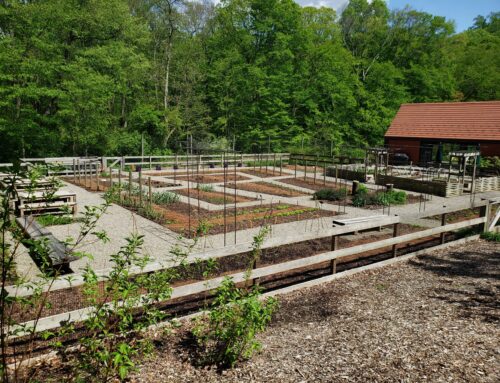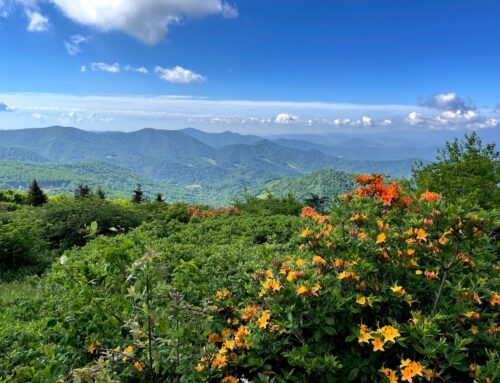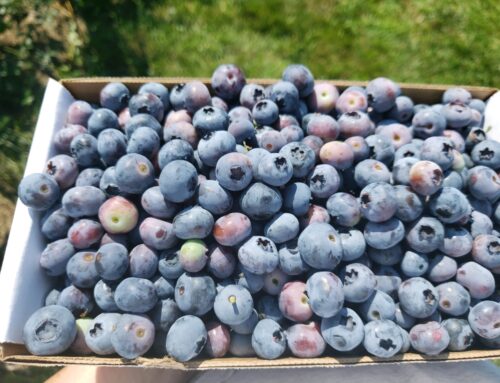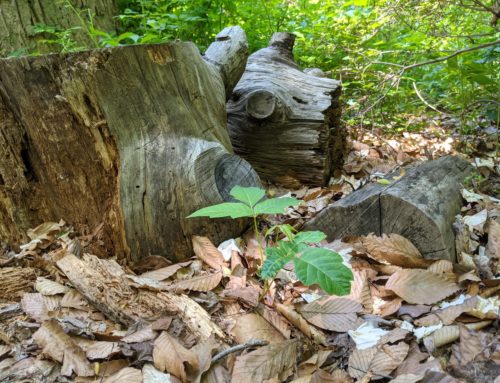However, we will have a chance to see this exact tree growing again at Tyler Arboretum – though it may look a little different at first. As the hard decision was made to take this tree down, we also made plans on propagating it so that it’s genetics may return to Tyler and perhaps, other public gardens. On December 16, 2020 on a cold overcast day, a community of arborists from Bartlett Tree Experts and horticulturists came to Tyler to help us assess and rescue our cedar of Lebanon. The tree needed to be in dormancy as cuttings from a dormant tree would have the highest success rate. Chuck Feld, a longtime Tyler supporter, professional plantsmen and arborist, was present, eagerly watching the arborists scale the giant. They would end up at the top where viable branches could be identified and harvested. These precious branches were sent to Longwood Gardens, Morris Arboretum, JG Akerboom Nursery, and a local nursery owned by Chuck Feld, Birmingham Gardens.
I had the privilege to witness and film Chuck as he deftly assessed the branches, searching for the healthiest to make cuttings. The plan was to take cuttings from our tree and graft them to the rootstocks of Cedrus deodora. You see, Deodora cedar, which is closely related to the cedar of Lebanon, is easier to come by and would provide a good base for the much more finicky Lebanon cedar to take hold of. Grafting is also very common in the horticulture trade, especially in the propagation of conifers and even grapevines. Chuck, the perennial teacher, showed me the challenges with our branches. Each showed signs of poor growth and desiccation which would mean a poor success rate. Within the next 30 minutes, Chuck quickly and precisely grafted 20 chances for our giant. All we needed to do now was to tend the cuttings and within a few months, we would know if the grafts took. Trying to write what happened would not do it justice. View the video to watch the process, called side veneer grafting.
Grafting is a technique used by many cultures to perpetuate lines of plants that are desirable for many purposes: food production, building material, clothing, etc. Tomatoes, grapes, apples, nursery pines, and spruces are commonly propagated by grafting. The process calls for joining one plant to another; one called the rootstock and the other scion wood. The scion is the portion possessing the characteristics that the propagator is looking for and the rootstock provides the vigor that the scion wood lacks. The rootstock may also grow easily from seed but not the scion wood plant. Success depends on the health of the scion wood (the rootstock is already healthy), compatibility of the two plants, proper joining, and aftercare.
As of writing this article, Chuck reports that one of his cuttings has taken, as well as three from JG Akerboom. We all can take a communal sigh of relief knowing that we will see this tree growing at Tyler again.
We decided to lead the process of saying goodbye to our dear friend with an article of the future, as we know that it is very difficult for all of us to wrap our heads around the hole left by this giant. Our Barn will not look or feel the same. All who were touched by this tree whether they walked by, were married beneath it’s spreading branches, or peered up at it with child’s eyes — will ache in the loss.
